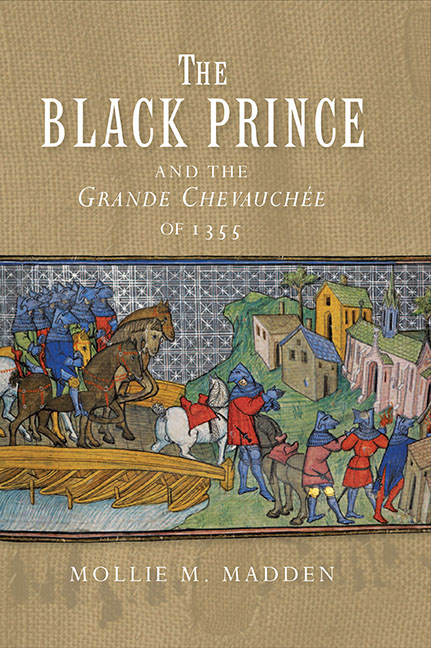Book contents
- Frontmatter
- Dedication
- Contents
- List of Illustrations
- Acknowledgements
- List of Abbreviations
- A Note on Measurements
- Map
- Introduction
- 1 The Preparations for the Chevauchée: England's Existing System of Purveyance
- 2 A Competent Military Force: England's Existing System of Recruitment
- 3 The Campaign to Narbonne: An Efficient System of Supply
- 4 The Return to Bordeaux: A Test of Endurance
- 5 After the Campaign
- Conclusion
- Appendix 1 Ships of the Prince's Fleet
- Appendix 2 Edward of Woodstock's Army
- Appendix 3 The Prince's March
- Appendix 4 Financial Tables
- Bibliography
- Index
- Warfare in History
2 - A Competent Military Force: England's Existing System of Recruitment
Published online by Cambridge University Press: 17 October 2019
- Frontmatter
- Dedication
- Contents
- List of Illustrations
- Acknowledgements
- List of Abbreviations
- A Note on Measurements
- Map
- Introduction
- 1 The Preparations for the Chevauchée: England's Existing System of Purveyance
- 2 A Competent Military Force: England's Existing System of Recruitment
- 3 The Campaign to Narbonne: An Efficient System of Supply
- 4 The Return to Bordeaux: A Test of Endurance
- 5 After the Campaign
- Conclusion
- Appendix 1 Ships of the Prince's Fleet
- Appendix 2 Edward of Woodstock's Army
- Appendix 3 The Prince's March
- Appendix 4 Financial Tables
- Bibliography
- Index
- Warfare in History
Summary
When the Prince left Plymouth on 9 September 1355, a sizeable though not extraordinarily large army sailed with him. This force had to be recruited, paid and equipped. It had to be organized, and effective organization required a certain amount of bureaucracy and the attendant support staff. But as with purveyance, recruiting an army was something of which the English had experience.
Numbers
The Anglo-Gascon force that marched from Bordeaux was by no means a small army; nor was it unusually large for the fourteenth century, even after the Black Death. Previous estimates of its total size vary from too low (3400) – usually because the Gascons are not included – to obviously exaggerated. Discounting the several thousand Gascons, of course, skews the numbers downward. The assumption is that the chroniclers always exaggerated their figures, and revising those figures downward is also problematic, as in most instances there is no explanation for why and how the numbers were established. Logistics and ineluctable realities, as well as the administrative documents, can be used to check the accuracy of the chroniclers and correct them as appropriate so that we can arrive at a figure more precise than John Trevisa's ‘many men of armes and archeres.’ First, though, a brief survey of previous estimates will illustrate the variety of figures and methods used to arrive at them.
Herbert Hewitt, in his study of the expedition, only offers numbers for the English troops. He gives the following figures: ‘1000 men-at-arms, 1000 horse archers, 300 to 400 foot archers, about 170 Welshmen.’ His numbers are based on the earlier works of A.E. Prince and J.H. Ramsay, as well as the chronicles and the indenture between the Prince and Edward III, but he offers no further explanation as to how he arrived at these figures.
Ramsay concludes the Prince took 3400 men to Gascony: the 1100 men specified in the indenture for the Prince's personal retinue and then double that number for the magnates’ contingents, thereby arriving at an estimate close to Robert of Avesbury's 3000, plus Welshmen. It is unclear why and how he arrives at that number for the earls’ retinues.
- Type
- Chapter
- Information
- The Black Prince and the Grande Chevauchée of 1355 , pp. 54 - 90Publisher: Boydell & BrewerPrint publication year: 2018



